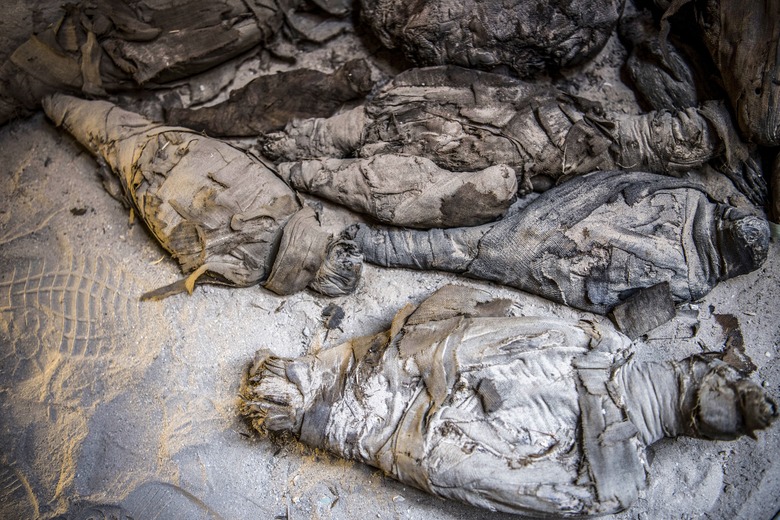A Newly Discovered Tomb Full Of Mummies Could Hold Ancient Secrets
Archaeologists have uncovered a tomb full of mummies, and while the findings are technically old, they could help us learn a ton of new information about ancient Egyptians.
Digging near Aswan, a city along the Nile in southern Egypt, a team of Egyptian and Italian archaeologists found a treasure trove of artifacts dating as far back as 332 B.C.E., or more than 2,000 years ago.
The recently unveiled tombs included remains of more than 30 mummies, including children, painted coffin fragments from someone named Tjit, a stretcher used to transport mummies, a lamp and ancient masks used only for the dead.
There was also an incredibly well-preserved statue of a Ba-Bird, a figure with the head of a human and the body of a bird. The Egyptians used Ba-Bird drawings and statues like the one found in Aswan to depict the soul of the recently departed.
Mummies Aren’t Just Something from Movies?
Mummies Aren't Just Something from Movies?
Nope, mummies are completely real. Scientists have found more than 1 million mummies, and they are a large part of the reason that we know what we do about a group of people that lived so long ago.
The mummification process was important to Egyptians, as many believed in the afterlife. They hoped to keep their bodies preserved as well as possible as they transitioned from one life to another. Their mummification processes worked remarkably well. Thanks to their techniques, scientists have been able to learn all kinds of information about Egyptian history, art, belief systems and even the daily lives of people who walked the Earth thousands of years before us.
The process of mummification could take up to a couple months and cost quite a bit of money. For that reason, most of the mummies we find today were leaders, members of the nobility or at least came from families with significant wealth.
Embalmers couldn't be squeamish — creating a mummy was pretty intense and technical. It involved removing the brain through the nose and removing organs (aside from the heart) through a hole in the body, usually in the abdomen. Then, the bodies were stuffed and covered in salt in order to completely remove moisture.
That moisture removal was key: It helped to stop the decaying process from within, and led to the well-preserved mummies that teach us so much today.
What Stuff Can We Learn from These New Mummies?
What Stuff Can We Learn from These New Mummies?
Scientists are energized by the new findings, in part because along with adult mummies, the tomb contained interesting pieces of art and the remains of children. One pair may even be a mother and child, which could teach scientists about the relationships ancient Egyptians had with their children.
One of the more interesting things they found were intricate masks that had been buried with the mummies. Egyptians created these masks so that the buried bodies could be identified in their next lives. Perhaps in the art and materials on those masks, historians can learn more about the people buried in this particular tomb, or more about the symbols that ancient Egyptians used to communicate different thoughts and words.
It may not be the afterlife that Egyptians dreamt of thousands of years ago, but their remains are certainly keeping a part of them alive as we continue to learn more about this ancient group of people.
Cite This Article
MLA
Dragani, Rachelle. "A Newly Discovered Tomb Full Of Mummies Could Hold Ancient Secrets" sciencing.com, https://www.sciencing.com/a-newly-discovered-tomb-full-of-mummies-could-hold-ancient-secrets-13718512/. 29 April 2019.
APA
Dragani, Rachelle. (2019, April 29). A Newly Discovered Tomb Full Of Mummies Could Hold Ancient Secrets. sciencing.com. Retrieved from https://www.sciencing.com/a-newly-discovered-tomb-full-of-mummies-could-hold-ancient-secrets-13718512/
Chicago
Dragani, Rachelle. A Newly Discovered Tomb Full Of Mummies Could Hold Ancient Secrets last modified March 24, 2022. https://www.sciencing.com/a-newly-discovered-tomb-full-of-mummies-could-hold-ancient-secrets-13718512/
